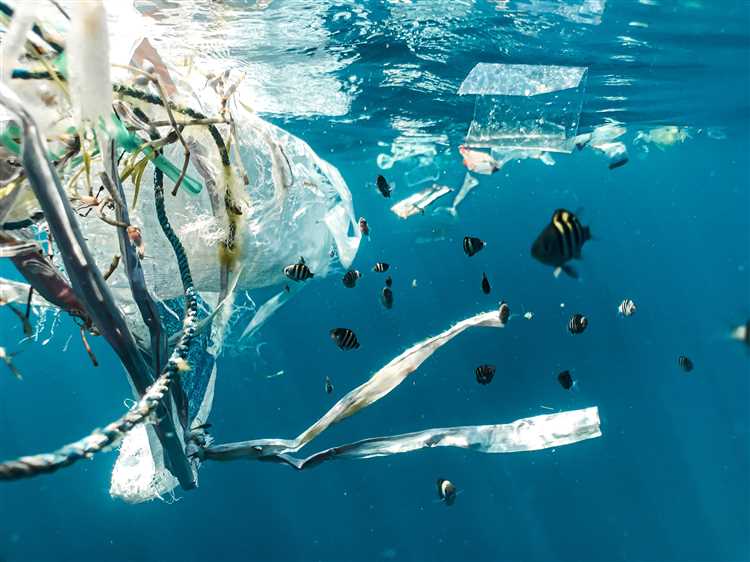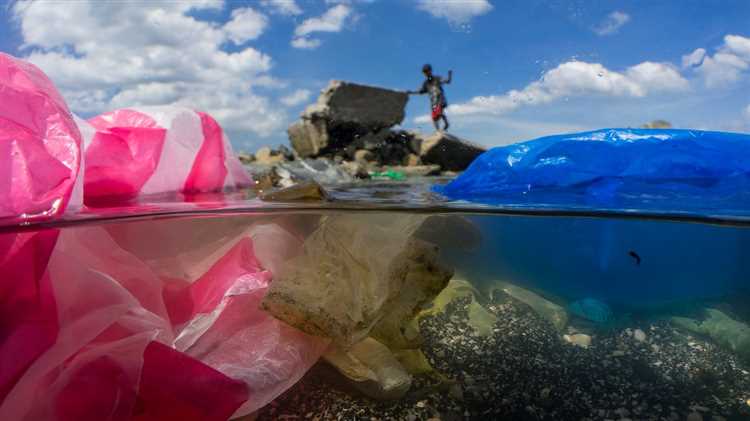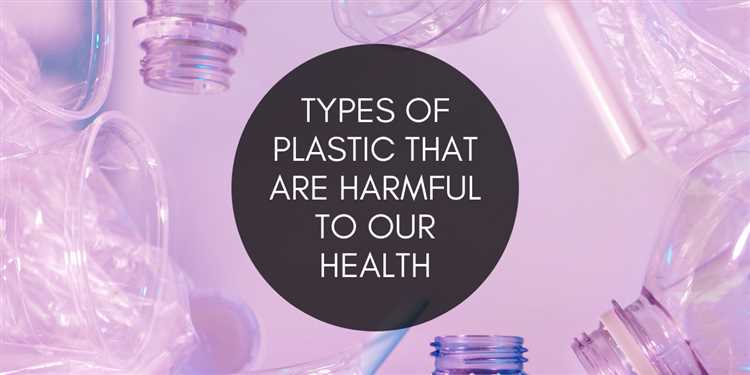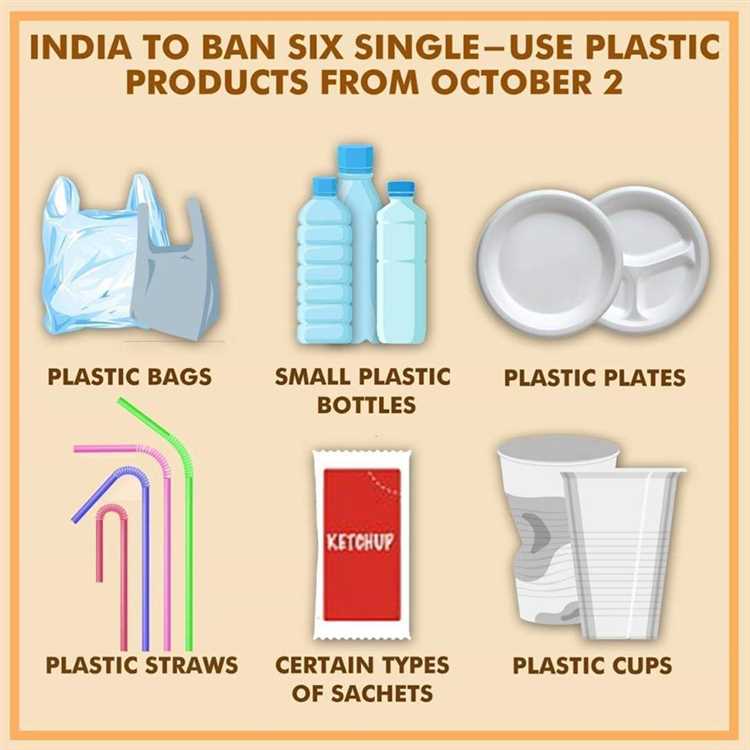
Plastic pollution has become one of the most pressing environmental issues in modern times. The convenience and affordability of plastic have led to its widespread use and subsequent disposal, which has resulted in devastating consequences for our planet. However, not all plastics are created equal. Some have a much more significant impact on the environment than others, and it is crucial for us to understand which ones are the most harmful.
Among the myriad types of plastics, there is one that stands out as the most devastating: single-use plastics. These are the plastics that are designed to be used only once before being discarded. Items such as plastic bags, straws, and water bottles fall into this category. Despite their convenience, single-use plastics pose a significant threat to our environment.
The problem with single-use plastics lies in their durability and longevity. Due to their composition, they take hundreds, if not thousands, of years to decompose. As a result, these plastics accumulate in landfills or end up in our oceans, where they wreak havoc on marine life. The sight of a sea turtle tangled in a plastic bag or a seabird with a stomach full of plastic debris is a distressing reminder of the impact our throwaway culture has on the natural world.
Furthermore, the production of single-use plastics also carries a heavy environmental cost. The extraction and processing of fossil fuels, such as oil and natural gas, are required to manufacture these plastics. This not only contributes to climate change but also depletes finite resources. In addition, the transportation and disposal of single-use plastics further contribute to carbon emissions and waste accumulation, exacerbating the environmental crisis we face.
- The Harmful Effects of Plastic Pollution
- 1. Threat to Wildlife
- 2. Environmental Impact
- The Growing Concern
- Understanding the Impact
- The Most Devastating Plastic
- The Consequences for Our Environment
- Taking Action Against Plastic Pollution
- Q&A:
- What is the most devastating plastic for our environment?
- Why is single-use plastic so harmful to our environment?
- What are some examples of single-use plastic?
- How can single-use plastic be reduced?
- What are the long-term effects of single-use plastic on our environment?
The Harmful Effects of Plastic Pollution
Plastic pollution has become one of the most pressing environmental issues of our time. The harmful effects of plastic pollution can be seen in various aspects of our ecosystem and can have long-lasting consequences for both wildlife and human health.
1. Threat to Wildlife

Plastic pollution poses a serious threat to wildlife, especially marine creatures. Millions of marine animals, such as seabirds, turtles, and marine mammals, become entangled in plastic debris or mistake it for food. This can lead to injuries, suffocation, and even death. Additionally, the chemicals present in plastic can be absorbed by organisms, causing disruptions to their hormones and reproductive systems.
2. Environmental Impact

The environmental impact of plastic pollution is far-reaching. Plastic waste can persist in the environment for hundreds of years, contributing to the accumulation of non-biodegradable waste in landfills and oceans. This not only ruins the aesthetic beauty of natural environments but also disrupts ecosystems and harms the delicate balance of marine and terrestrial life.
Furthermore, the production and disposal of plastic contribute to greenhouse gas emissions, leading to climate change and global warming. Plastic manufacturing releases harmful air pollutants and toxic chemicals into the atmosphere, which have adverse effects on air quality and human health.
3. Health Risks
Plastic pollution not only affects the environment but also poses significant risks to human health. Consuming plastic-contaminated food and water can expose individuals to harmful chemicals, such as bisphenol A (BPA) and phthalates, which have been linked to various health issues, including hormonal imbalances, reproductive problems, and certain types of cancers.
In addition, microplastics, tiny plastic particles, have been found in the air we breathe, the water we drink, and the food we eat. These microplastics can enter our bodies and accumulate over time, potentially causing inflammation, oxidative stress, and other adverse health effects.
In conclusion, plastic pollution is a grave concern that demands immediate attention. The harmful effects of plastic pollution range from wildlife endangerment to environmental degradation and human health risks. It is crucial for individuals, industries, and governments to take proactive measures to reduce plastic consumption, improve recycling systems, and promote sustainable alternatives to plastic in order to mitigate the devastating impact of plastic pollution on our environment.
The Growing Concern

Plastic pollution has become a growing concern for our environment, as it poses a significant threat to the health of our planet and its ecosystems. The amount of plastic waste generated worldwide has reached an alarming level, with millions of tons of plastic ending up in our oceans, landfills, and even in the air we breathe.
One of the most devastating types of plastic is single-use plastic. These are items that are used once and then thrown away, such as plastic bags, straws, and water bottles. Single-use plastics are a major contributor to plastic pollution, as they are not easily biodegradable and can take hundreds of years to decompose.
Plastic pollution not only affects marine life but also poses a significant threat to human health. Plastic waste in the ocean can break down into microplastics, tiny particles less than 5mm in size. These microplastics can be ingested by marine creatures and make their way up the food chain, eventually ending up on our dinner plates.
In addition to the impact on marine life and human health, plastic pollution also has economic consequences. The cleanup and disposal of plastic waste cost billions of dollars annually, putting a burden on local governments and taxpayers. It also affects tourism, as plastic pollution can make beaches and other natural attractions unattractive for visitors.
As awareness about the environmental impact of plastic pollution continues to grow, there is an increasing call for action. Many countries and cities have implemented bans or restrictions on single-use plastics, while others are adopting recycling programs and promoting the use of sustainable alternatives.
It is crucial for individuals to understand the detrimental effects of plastic pollution and make conscious choices to reduce their plastic consumption. By opting for reusable items, recycling properly, and supporting initiatives that aim to tackle plastic pollution, we can all contribute to a cleaner and healthier environment for future generations.
Understanding the Impact
Plastic pollution has become one of the biggest environmental challenges of our time. With its non-biodegradable nature, plastic waste has a lasting impact on ecosystems and wildlife.
One of the most devastating plastics for our environment is single-use plastic. These include items like plastic bags, bottles, and straws. They are used for a short period of time but can persist in the environment for hundreds of years.
When single-use plastic is not properly disposed of or recycled, it often finds its way into rivers, oceans, and other natural habitats. This has dire consequences for marine life, as animals mistake plastic for food or get entangled in it.
The impact of plastic pollution goes beyond just the visible pollution we see on beaches or floating in the ocean. Microplastics, tiny pieces of plastic less than 5mm in size, have infiltrated our food chain. They are found in seafood, drinking water, and even the air we breathe.
The presence of microplastics in our bodies raises concerns about the potential health effects. Studies have shown that these particles can release harmful chemicals and toxins, which have been linked to various health issues, including cancer, reproductive problems, and immune system disorders.
Furthermore, plastic production contributes to greenhouse gas emissions, exacerbating climate change. The extraction of fossil fuels to produce plastic, as well as the manufacturing and transportation processes, all release significant amounts of greenhouse gases into the atmosphere.
To tackle the devastating impact of plastic pollution, it is crucial to reduce our reliance on single-use plastics and promote sustainable alternatives. Recycling, waste management, and public awareness campaigns play a vital role in minimizing plastic waste and protecting our environment.
By understanding the impact of plastic pollution, we can take action to preserve our planet for future generations and create a healthier and more sustainable world.
The Most Devastating Plastic
Plastic pollution has become one of the biggest environmental challenges of our time. With an estimated 8 million metric tons of plastic waste entering our oceans every year, it’s crucial to identify the most devastating types of plastic and find sustainable solutions.
Among the different types of plastic, one that stands out as particularly harmful is single-use plastic. Single-use plastic refers to items that are used only once before being thrown away, such as plastic bags, straws, and water bottles.
The problem with single-use plastic is that it is designed to be used for a short period of time, but it lasts for hundreds of years in the environment. This means that every single plastic bag or straw that we use will outlive us and continue to pollute the planet.
Another devastating plastic is microplastics. Microplastics are tiny particles of plastic that are less than 5 millimeters in size. They come from a variety of sources, including larger plastic items that break down over time and microbeads used in personal care products.
Microplastics pose a significant threat to marine life, as they can be easily ingested by fish, seabirds, and other marine animals. Once ingested, they can cause internal injuries, blockages in the digestive system, and even death.
Plastics made from non-renewable resources, such as petroleum, are also highly damaging to the environment. The extraction and production of these plastics contribute to climate change, deforestation, and habitat destruction.
It’s important to address the root causes of plastic pollution and find alternatives to these devastating plastics. This includes reducing our reliance on single-use plastic, promoting the use of biodegradable and compostable materials, and investing in sustainable production methods.
By taking action now, we can help to protect our environment and ensure a healthier future for generations to come.
The Consequences for Our Environment
Plastic pollution has become a severe issue with devastating consequences for our environment. The excessive use of single-use plastics, such as plastic bags, straws, bottles, and packaging materials, has resulted in widespread contamination of our ecosystem.
The primary consequence of plastic pollution is the harm caused to wildlife. Marine animals often mistake plastic debris for food, leading to ingestion and internal injuries. Sea turtles, for example, are known to consume plastic bags, mistaking them for jellyfish, one of their main food sources. This can cause intestinal blockage and ultimately lead to their death.
Additionally, plastic waste is also responsible for the destruction of terrestrial ecosystems. As plastic breaks down into smaller microplastics, it can be carried by wind and water, contaminating soil, rivers, and lakes. This not only affects the health of the local wildlife but also poses a risk to human health, as microplastics can enter the food chain through the consumption of contaminated water and food.
| Consequence | Description |
| Bioaccumulation | As plastic breaks down into microplastics, it accumulates in the bodies of organisms, leading to potential toxic effects. |
| Disruption of ecosystems | The presence of plastics in ecosystems can alter the natural balance, affecting the behavior and reproduction of wildlife. |
| Chemical leaching | Plastic materials can release harmful chemicals, such as phthalates and bisphenol A, which can have adverse effects on both humans and animals. |
In addition to the ecological consequences, plastic pollution also has economic implications. The cleanup and disposal of plastic waste require significant resources, putting a strain on local governments and businesses. Moreover, the tourism industry, which relies heavily on pristine natural environments, may suffer as a result of plastic pollution.
To mitigate the consequences of plastic pollution, it is crucial to reduce plastic consumption, promote recycling and the use of sustainable alternatives, and raise awareness about the environmental impact of plastic waste. Only through collective efforts can we hope to protect our environment and preserve it for future generations.
Taking Action Against Plastic Pollution

Plastic pollution is a global crisis that requires immediate and widespread action. Governments, organizations, and individuals around the world are taking steps to address this issue and reduce the amount of plastic waste that ends up in our environment.
One of the most effective ways to combat plastic pollution is through legislation and policy changes. Many countries have implemented bans or restrictions on single-use plastics, such as plastic bags and straws. These measures help to reduce the demand for these products and encourage the use of more sustainable alternatives.
Additionally, organizations and businesses are taking action by implementing plastic-free initiatives. This includes finding alternatives to plastic packaging, promoting recycling programs, and educating consumers about the importance of reducing plastic consumption.
Individuals also play a crucial role in tackling plastic pollution. By making simple changes to our daily routines, such as using reusable bags and water bottles, we can significantly reduce our plastic waste. Participating in beach and community cleanups is another way to take direct action and help remove plastic debris from our shores.
Education and awareness are key components of any effective solution to plastic pollution. By educating ourselves and others about the environmental impact of plastic waste, we can encourage more people to take action and make conscious choices to reduce their plastic footprint.
Finally, technological advancements and innovation are providing new opportunities to tackle plastic pollution. From the development of biodegradable plastics to the invention of recycling technologies, these advancements offer hope for a future without plastic pollution.
- Legislation and policy changes
- Plastic-free initiatives
- Individual actions
- Education and awareness
- Technological advancements
It is clear that taking action against plastic pollution requires a multi-faceted approach. By combining efforts at the government, organizational, and individual levels, we can work towards a cleaner and more sustainable future for our planet.
Q&A:
What is the most devastating plastic for our environment?
The most devastating plastic for our environment is single-use plastic, also known as disposable plastic.
Why is single-use plastic so harmful to our environment?
Single-use plastic is harmful to our environment because it is not biodegradable and can persist in the environment for hundreds of years. This means that once it is disposed of, it accumulates in landfills, rivers, oceans, and other natural environments, causing pollution and harm to wildlife.
What are some examples of single-use plastic?
Some examples of single-use plastic include plastic bags, plastic straws, plastic water bottles, plastic utensils, and plastic packaging for food and other products.
How can single-use plastic be reduced?
Single-use plastic can be reduced by opting for reusable alternatives, such as using cloth bags instead of plastic bags, using a refillable water bottle instead of buying bottled water, and using metal or bamboo utensils instead of plastic utensils. Additionally, supporting legislation and policies that ban or limit the use of single-use plastic can also help reduce its consumption.
What are the long-term effects of single-use plastic on our environment?
The long-term effects of single-use plastic on our environment include the pollution of land, water, and air, the harm to wildlife through ingestion and entanglement, and the release of toxic chemicals into the environment. This can have serious consequences for ecosystems and human health.